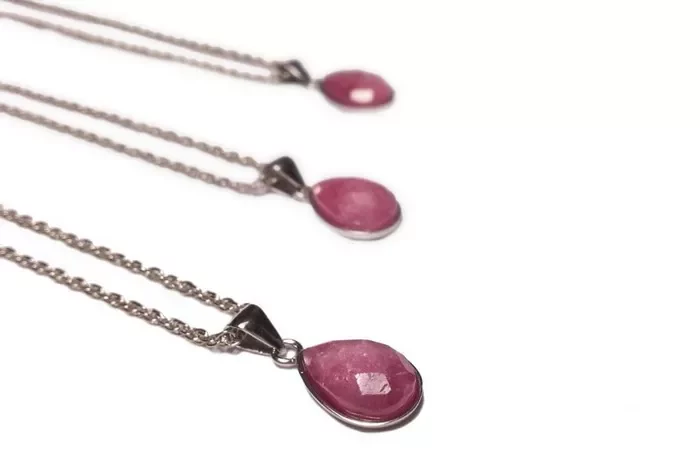Rubies, with their captivating red hues, have fascinated humans for centuries. Among the various types of rubies, the “pigeon blood ruby” holds a special place due to its vivid color and exceptional value. But how can one determine if a ruby is indeed a pigeon blood ruby? This article delves into the characteristics, origins, and evaluation methods of pigeon blood rubies, providing a comprehensive guide to identifying these rare gems.
Understanding Rubies and Their Value
Before exploring the specifics of pigeon blood rubies, it’s essential to understand what makes a ruby valuable. Rubies are a variety of the mineral corundum, which is composed primarily of aluminum oxide. The presence of trace elements, such as chromium, gives rubies their red color. The intensity and hue of this red determine the ruby’s value, along with factors like clarity, cut, and carat weight.
What Is a Pigeon Blood Ruby?
A pigeon blood ruby is a term used to describe rubies with a specific, highly desirable color. This term is often misunderstood and can vary slightly depending on the source. Generally, pigeon blood rubies exhibit a vivid, intense red with a slight bluish hue, reminiscent of the blood from a freshly killed pigeon. This specific coloration is rare and highly prized in the gemstone market.
Historical Significance of Pigeon Blood Rubies
The term “pigeon blood ruby” originated in Myanmar (formerly Burma), where some of the finest rubies have been mined. Burmese rubies have long been renowned for their exceptional color and quality. The Mogok Valley in Myanmar is particularly famous for producing pigeon blood rubies, and gems from this region are often considered the benchmark for this category.
Key Characteristics of Pigeon Blood Rubies
Color
The defining feature of a pigeon blood ruby is its color. The gem should exhibit a vibrant, pure red with a slight bluish undertone. The red should be neither too dark nor too light, maintaining a consistent intensity throughout the stone. The ideal pigeon blood ruby should be vivid and saturated, appearing almost fluorescent under sunlight.
Clarity
While color is the most crucial factor, clarity also plays a significant role. Pigeon blood rubies often contain inclusions, which are natural imperfections within the stone. However, these inclusions should not detract from the overall beauty of the gem. Inclusions in pigeon blood rubies are typically silk-like and can enhance the stone’s brilliance by scattering light within the gem.
Cut
The cut of a ruby affects its appearance and how light interacts with the stone. A well-cut pigeon blood ruby will maximize the stone’s color and brilliance. Common cuts for rubies include oval, cushion, and round shapes. The cut should enhance the gem’s natural beauty, highlighting its vivid color and clarity.
Evaluating a Pigeon Blood Ruby
Determining whether a ruby qualifies as a pigeon blood ruby involves a combination of subjective assessment and scientific analysis. Here are the primary methods used to evaluate these gems:
Visual Inspection
A trained gemologist can often identify a pigeon blood ruby through visual inspection. This involves examining the color, clarity, and cut of the stone under various lighting conditions. Gemologists use magnification tools to inspect inclusions and assess the overall quality of the gem. Visual inspection remains a crucial first step in identifying pigeon blood rubies.
Spectroscopic Analysis
Advanced spectroscopic techniques can help determine the precise composition of a ruby. This analysis measures the absorption and emission of light within the gem, providing detailed information about the trace elements present. For pigeon blood rubies, a high concentration of chromium is typically observed, which contributes to the stone’s vivid red color.
Origin Determination
The origin of a ruby can significantly impact its value. Rubies from the Mogok Valley in Myanmar are often considered the finest, and their provenance can be confirmed through a combination of visual inspection and scientific analysis. Advanced techniques like Raman spectroscopy and inclusion analysis can help identify the geographic origin of the ruby.
Certification
Obtaining certification from a reputable gemological laboratory is crucial when determining if a ruby is a pigeon blood ruby. Laboratories like the Gemological Institute of America (GIA), the Swiss Gemmological Institute (SSEF), and the Gübelin Gem Lab provide detailed reports on a ruby’s color, clarity, cut, and origin. These reports can confirm whether the gem meets the criteria for a pigeon blood ruby.
See Also: What is Pigeon Blood Ruby Price per Carat?
Care and Maintenance of Pigeon Blood Rubies
Owning a pigeon blood ruby is a privilege, and proper care is essential to maintain its beauty and value. Here are some tips for caring for these precious gems:
Cleaning
Pigeon blood rubies should be cleaned regularly to keep them looking their best. Use a soft brush, mild soap, and warm water to gently clean the stone. Avoid harsh chemicals or ultrasonic cleaners, as they can damage the gem or its setting.
Storage
Store pigeon blood rubies separately from other jewelry to prevent scratching. Use a soft pouch or a lined jewelry box to protect the gem from damage.
Handling
Handle pigeon blood rubies with care to avoid chipping or scratching the stone. Remove the jewelry when engaging in activities that could cause damage, such as sports or heavy manual labor.
Conclusion
Identifying a pigeon blood ruby involves a combination of visual assessment, scientific analysis, and expert certification. The distinctive color, clarity, and origin of these gems make them highly sought after in the market. By understanding the key characteristics and evaluation methods, enthusiasts and collectors can appreciate the unique beauty and value of pigeon blood rubies.
Whether you are a seasoned gem collector or a curious enthusiast, the allure of pigeon blood rubies is undeniable. These exceptional gems represent the pinnacle of nature’s artistry, captivating hearts and minds with their vivid red hue and unparalleled brilliance.


